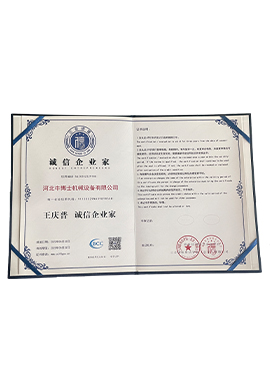wheat reaper machine
The Wheat Reaper Machine Revolutionizing Agriculture
The agricultural landscape has undergone significant transformations over the years, particularly with the advent of mechanization. Among the revolutionary inventions, the wheat reaper machine stands out as a critical development that has reshaped grain harvesting practices. It symbolizes the integration of technology into agriculture, leading to enhanced productivity and efficiency.
Wheat is one of the most widely cultivated cereal grains globally and a staple food for billions of people. Historically, harvesting wheat was an arduous task, traditionally done by hand using sickles and scythes. This labor-intensive method not only demanded considerable manpower but also limited the speed at which fields could be harvested. Farmers often faced challenges such as weather unpredictability and labor shortages, which could significantly impact their harvest yields. The introduction of the wheat reaper machine marked a turning point in this arduous process.
The origins of the wheat reaper can be traced back to the early 19th century, with one of the earliest models being patented by Cyrus McCormick in 1831. McCormick's design incorporated mechanical components that allowed for the cutting of wheat stalks efficiently. His innovation was a game-changer; it drastically reduced the time and effort required for harvesting. Farmers who adopted this technology experienced first-hand the benefits of increased productivity and reduced labor costs.
The wheat reaper machine operates on relatively simple principles. It utilizes a series of rotating blades that cut through the stalks of wheat close to the ground, gathering the cut wheat and laying it in neat rows for easy collection. This mechanized method enables farmers to harvest large areas of wheat in a fraction of the time it would take using traditional methods. The efficiency gains are not only measured in the speed of harvesting but also in the reduction of crop losses due to delayed harvesting.
wheat reaper machine

As agricultural practices evolved, so too did the wheat reaper machine. Over the decades, new designs and technologies have been incorporated to enhance functionality. Modern machines often come equipped with features such as self-propulsion, adjustable cutting heights, and automatic grain collection systems. These advancements have further optimized the harvesting process, allowing farmers to work longer hours and cover greater areas of land.
The impact of the wheat reaper machine extends beyond just efficiency. It has also contributed to the economic viability of farming. By enabling farms to operate on a larger scale, many farmers have shifted from subsistence farming to commercial agriculture. This shift has had profound implications for food supply chains, food security, and rural economies. Increased wheat production has ensured a steady supply of this essential grain, contributing to food stability in various regions around the world.
Additionally, the use of machinery in agriculture has encouraged the adoption of modern farming practices that improve soil health and reduce the environmental impact of farming. With more efficient harvesting methods in place, farmers can implement crop rotation and other sustainable practices that bolster soil fertility and reduce dependency on chemical fertilizers.
Despite the multitude of advantages that the wheat reaper machine brings to agriculture, it is essential to consider the broader implications of mechanization. The reliance on machines can lead to a decline in traditional farming skills and knowledge passed down through generations. Moreover, the initial investment in such machinery can be prohibitive for small-scale farmers, potentially widening the gap between large agribusinesses and smaller farms.
In conclusion, the wheat reaper machine has undoubtedly revolutionized the way wheat is harvested, making it one of the most significant advancements in agricultural technology. It has enhanced productivity, reduced labor costs, and transformed farming practices, allowing farmers to meet the growing demand for wheat in an ever-evolving global market. However, as with any technological advancement, it is crucial to strike a balance between mechanization and the preservation of traditional farming practices. By doing so, the agriculture sector can continue to innovate while respecting the heritage and knowledge that has sustained it for centuries.
Latest news
-
When to Upgrade Your Old Forage HarvesterNewsJun.05,2025
-
One Forage Harvester for All Your NeedsNewsJun.05,2025
-
Mastering the Grass Reaper MachineNewsJun.05,2025
-
How Small Farms Make Full Use of Wheat ReaperNewsJun.05,2025
-
Harvesting Wheat the Easy Way: Use a Mini Tractor ReaperNewsJun.05,2025
-
Growing Demand for the Mini Tractor Reaper in AsiaNewsJun.05,2025







